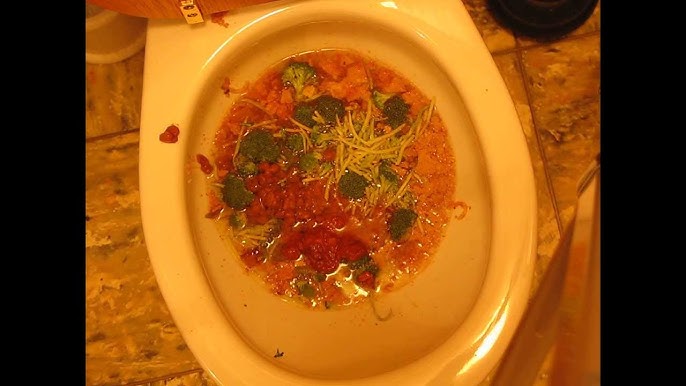How do you feel in relation to Flushing Food Down the Toilet??

Intro
Many individuals are frequently confronted with the problem of what to do with food waste, especially when it involves leftovers or scraps. One usual concern that develops is whether it's all right to purge food down the toilet. In this post, we'll delve into the reasons people could think about purging food, the consequences of doing so, and alternate techniques for correct disposal.
Reasons why individuals might consider purging food
Absence of recognition
Some individuals may not be aware of the potential damage brought on by flushing food down the toilet. They may erroneously think that it's a safe method.
Comfort
Purging food down the toilet might feel like a quick and simple service to throwing away unwanted scraps, specifically when there's no nearby trash bin offered.
Laziness
In many cases, individuals might just select to flush food out of large idleness, without considering the effects of their activities.
Repercussions of flushing food down the toilet
Ecological effect
Food waste that ends up in rivers can add to contamination and harm marine communities. Additionally, the water used to flush food can strain water sources.
Pipes concerns
Purging food can lead to stopped up pipes and drains, causing pricey plumbing fixings and troubles.
Types of food that ought to not be purged
Coarse foods
Foods with fibrous appearances such as celery or corn husks can get tangled in pipelines and trigger blockages.
Starchy foods
Starchy foods like pasta and rice can absorb water and swell, resulting in blockages in pipelines.
Oils and fats
Greasy foods like bacon or food preparation oils should never be purged down the toilet as they can strengthen and trigger obstructions.
Appropriate disposal methods for food waste
Making use of a waste disposal unit
For homes geared up with garbage disposals, food scraps can be ground up and purged through the plumbing system. Nevertheless, not all foods are suitable for disposal in this way.
Recycling
Particular food packaging materials can be recycled, minimizing waste and decreasing environmental effect.
Composting
Composting is a green method to dispose of food waste. Organic materials can be composted and utilized to improve soil for gardening.
The relevance of appropriate waste administration
Reducing environmental harm
Appropriate waste management methods, such as composting and recycling, assistance minimize contamination and maintain natural deposits for future generations.
Shielding pipes systems
By avoiding the method of flushing food down the bathroom, house owners can protect against costly plumbing repairs and keep the integrity of their plumbing systems.
Final thought
To conclude, while it might be alluring to flush food down the bathroom for ease, it is very important to comprehend the possible repercussions of this activity. By adopting correct waste monitoring practices and getting rid of food waste responsibly, individuals can contribute to healthier plumbing systems and a cleaner atmosphere for all.
FLUSH FOOD DOWN THE TOILET?
FLUSHING FOOD CAN CAUSE BLOCKED DRAINS IN YOUR HOME
All of the plumbing fixtures in your home are connected to the same sewer pipe outside of your home. This outdoor sewer pipe is responsible for transporting all the wastewater from your home to the Council sewer mains. Even small pieces of food that go down the kitchen sink can cause problems for your sewer. It should therefore be obvious that flushing larger bits of food, such as meat, risks a clog in either the toilet itself or the sewer pipes. Flushing greasy food is even more problematic because oil coagulates when it cools, coating the interior lining of your pipes.
THE TOILET IS NOT A BIN
Food isn’t the only thing that people shouldn’t be flushing down the toilet. People use the toilet to dispose of all kinds of things such as tampons, makeup wipes, dental floss, kitty litter and even underwear. Water goes to great lengths to educate residents about the high costs and stress placed on wastewater treatment systems simply from people flushing the wrong stuff down the toilet. It costs taxpayers millions of dollars each year, and homeowners thousands in blocked drain repairs.
FLUSHING FOOD IS A WASTE OF WATER
Flushing food is a waste of our most precious resource - water. In June this year Level 1 water restrictions were introduced to protect water supply from drought conditions. Much of New South Wales continues to be affected by prolonged drought with recent figures revealing up to 97 per cent of the state remains in drought. Depending on whether you have a single or dual flush toilet, every single flush uses between five and 11 litres of water. In the current climate this is a huge amount of water to be wasting on flushing food that should be placed in the bin (or better yet, the compost).
https://www.jabplumbingsolutions.com.au/blog/can-you-flush-food-down-the-toilet

Hopefully you enjoyed reading our piece on . Thanks for finding the time to read through our content. Enjoyed our content? Please share it. Help somebody else find it. Thanks for taking the time to read it.
Quote & Schedule